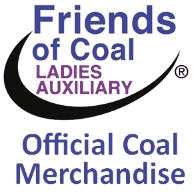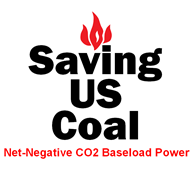
 











|
Signature Sponsor


By Mark W. Hendrickson
August 5, 2024 - Access to cheap, reliable, safe energy is crucial to human well-being. Higher per capita energy consumption correlates tightly with human prosperity (see graph in this link and here). It is no exaggeration to say that we could not possibly be as wealthy as we are today — far wealthier than our great-grandparents — were it not for all the energy we have consumed. The multi-generational evolution of our sources of energy shows two clear trends. As developed economies progressed from wood to coal to oil to natural gas to nuclear, each step featured energy that was progressively more concentrated while also emitting less pollution. From Efficient Energy to Inefficient EnergyThe trend toward cleaner, more concentrated energy sources bumped into a countertrend five to seven decades ago. A strong anti-nuclear movement emerged. Environmentalists exploited Americans’ poor understanding of nuclear energy to turn public opinion against it. Consequently, government progressively impeded the adoption of this clean energy through ever-expanding federal regulations that artificially increased costs and delayed or halted the construction of nuclear power plants. In the 1990s, and especially after the turn of the century, the anti-nuclear movement morphed into a broader anti-energy movement, as I wrote in this space fifteen years ago. The green left worked to thwart the domestic production of fossil fuels. Some of them went from promoting natural gas as a welcome cleaner alternative to coal to vehemently opposing the cleaner fuel. A green leftist elite was able to exploit the unscientific climate change hysteria whipped up by a government-funded cabal of elitists to adopt a series that are some combination of sheer stupidity and sinister destructiveness. Their single worst policy happened in 2009 when Congress made the catastrophic policy error of classifying carbon dioxide as a pollutant. CO2, of course, is plant food; it is one of the necessary foundations of the human food chain. A pollutant? I recall in 1974 when American-made cars were legally required to have catalytic converters on their cars’ engines, the purpose of which, as scientists said at the time, was to convert poisonous carbon monoxide into harmless carbon dioxide. Since 2009, the green left has aggressively pursued their ultimate objective of imposing a top-down economic plan on the country — a misanthropic plan infused with green paganism that would keep the world’s poor countries poor — a plan whose follies and failures are now glaringly apparent for anyone with eyes to see. For almost four decades now, Uncle Sam has spent literally trillions of federal dollars subsidizing “renewable energy” (better labeled “intermittent energy”) — i.e., wind and solar — which are less concentrated, less reliable, and more expensive than fossil fuels and nuclear energy. The subsidies to wind and solar energy companies comprise one of the largest corporate welfare schemes in our country’s history. Its overall effect is to make us poorer by artificially boosting the price of energy. Ah, yes, our tax dollars at work. The leftist government-funded war against cheap, reliable energy is not only anti-economic, anti-capitalistic, and anti-prosperity, but fundamentally anti-human (hence the reference to paganism above). If the anti-human animus of our current energy policies fail to convince you that those policies are perverse, consider this: the supposedly “green” technologies of wind and solar energy are wreaking environmental havoc.
Not only do solar panels and giant windmills require vast amounts of land (one study estimates land four times the size of South Dakota), but the massive amount of minerals that would have to be mined to continue expanding wind and solar are environmentally devastating. Equally problematic is the daunting task of figuring out how to dispose of all the waste generated by panels and windmills, virtually all of which have to be replaced every 20 or 30 years. Then there is the damage to countless ecosystems as solar panels and windmills kill vast numbers of birds, bats, and insects (as much as five percent of some insect species per year). If any fossil fuel company were killing one-tenth the wildlife that wind and solar are killing, the greens would be screaming to lock up their CEOs. Instead, in their pursuit of socialistic control over us, greens are too often willing to ignore the decimation of animal species wrought by “green energy.” And let us not overlook the dangers to human wellbeing posed by wind and solar, whether it be the depleting of aquifers, spikes in human suffering from “valley fever” and silicosis, or health hazards from increasing humans’ exposure to Bisphenol A which, according to the Swedish Environmental Protection Agency, “is the most toxic substance we know.” There also are psychological effects. As reported in one medical journal, “People who live or work in close proximity to IWTs have experienced symptoms that include decreased quality of life, annoyance, stress, sleep disturbance, headache, anxiety, depression, and cognitive dysfunction.” Another study even linked wind turbines to significantly higher suicide rates. Reject Climate AlarmismFor those Americans who believe that we have no choice but to turn to wind and solar or face a climate Armageddon, I offer here the sketchiest of thumbnail rebuttals to climate alarmism: Earth has gotten a degree or two warmer since the harsh Little Ice Age ended in the 1800s. Today’s warmer temperatures have made life safer for humans. Even today, after almost two centuries of warming, approximately twenty times as many humans die from cold than from heat. Today’s warmer temperatures (manifest most noticeably in milder nighttime and wintertime temperatures) have resulted in longer growing seasons that — combined with more carbon dioxide (i.e., plant food) in the atmosphere — have enhanced agricultural productivity to the point where our planet can produce enough food to sustain its eight billion people. Deaths from adverse weather events have plummeted rather than increased over the past century. And for those who may have been taught that carbon dioxide is the devil’s gas, consider this: Since the end of the Little Ice Age, the concentration of carbon dioxide in the atmosphere has increased from ~290 parts per million to ~420 ppm (which is still at the low end of its long-term historical range). A major beneficial effect of this CO2 enrichment of our atmosphere is that it has caused a significant greening of our planet (see here, too) — a result you would think people calling themselves “greens” would applaud. If you still think wind and solar energy should be subsidized, consider this: As we head toward a future in which various technologies (e.g., AI, VR, cloud computing) will require ever-more electricity, it is becoming painfully clear that intermittent, less efficient, and more costly energy sources won’t meet our needs. Further, those inferior technologies are steering us toward potentially catastrophic failures of our electrical grid system due to the large fluctuations and consequent unreliability of electricity generated by wind and solar energy. Both the Federal Energy Regulatory Commission (FERC) and the North American Electric Reliability Corporation (NERC) have issued blunt, dire warnings about this looming danger. A Free Energy MarketThe good news is that we have the capacity to expand our production of energy considerably and to reverse the deterioration in the security of our electric grid. We are the global energy superpower in terms of fossil fuels and have reserves more than sufficient to easily meet our needs. For reasons explained by advanced physics, additional CO2 in the atmosphere will have a negligible impact on warming, which should allay the concerns of those who believe that warming is bad, but it will cause further greening of planet Earth, so bring on those fossil fuels! We also have some nuclear options. The decades-old anti-nuke hysteria seems to have passed — finally! Nuclear power has long been shown to be safe and reliable. The French generate more than 70 percent of their electricity from nuclear power. They deposit their spent radioactive fuel rods in a vault under one of their cities. There are no compelling reasons to avoid this clean, prolific energy source. It is encouraging that, in June, the Senate overwhelmingly passed the ADVANCE Act. This legislation is designed to streamline the application process, reduce fees, and shorten approval times for the construction of nuclear energy generators. In short, ADVANCE does much to reverse the longstanding anti-nuke regulatory framework that has so tragically crippled nuclear power in our country. This is especially timely in light of the exciting possibilities currently being explored for small (maybe neighborhood size or even smaller) nuclear reactors in addition to larger units to power cities. We have arrived at a propitious time to reexamine our national energy policies. Clearly, intermittent energy sources are not a viable answer to our society’s growing energy needs. Neither is corn-based ethanol, a decades-old environmentally destructive boondoggle whereby the federal government subsidizes corn production on millions of acres of land that would otherwise be used for different agricultural products or simply serve as natural habitat. Government subsidies to wind, solar, and ethanol have been acting as a brake on economic growth while helping to balloon our soaring national debt. The first step in reforming energy policy should be to jettison all the wasteful, counterproductive subsidies to renewables. What energy sources should our electric utilities use? Frankly, I don’t know, and neither does anyone else. The only way to sort through the various options is to let markets work their magic. Free and open markets process far more economically valuable information than any genius individual or panel of experts possibly can. Personally, with all the positive benefits to human beings and our environment, I think we should continue to develop our domestic fossil fuels. I am equally open to the potential offered by nuclear. I am also willing to conder the possibility that there may be local areas where wind and solar make sense — as long as they can do so without government subsidies. In sum, then, a rational energy policy for the USA has three elements:
Such a policy mix will solve our current energy challenges and boost prosperity for decades to come. |
 










|